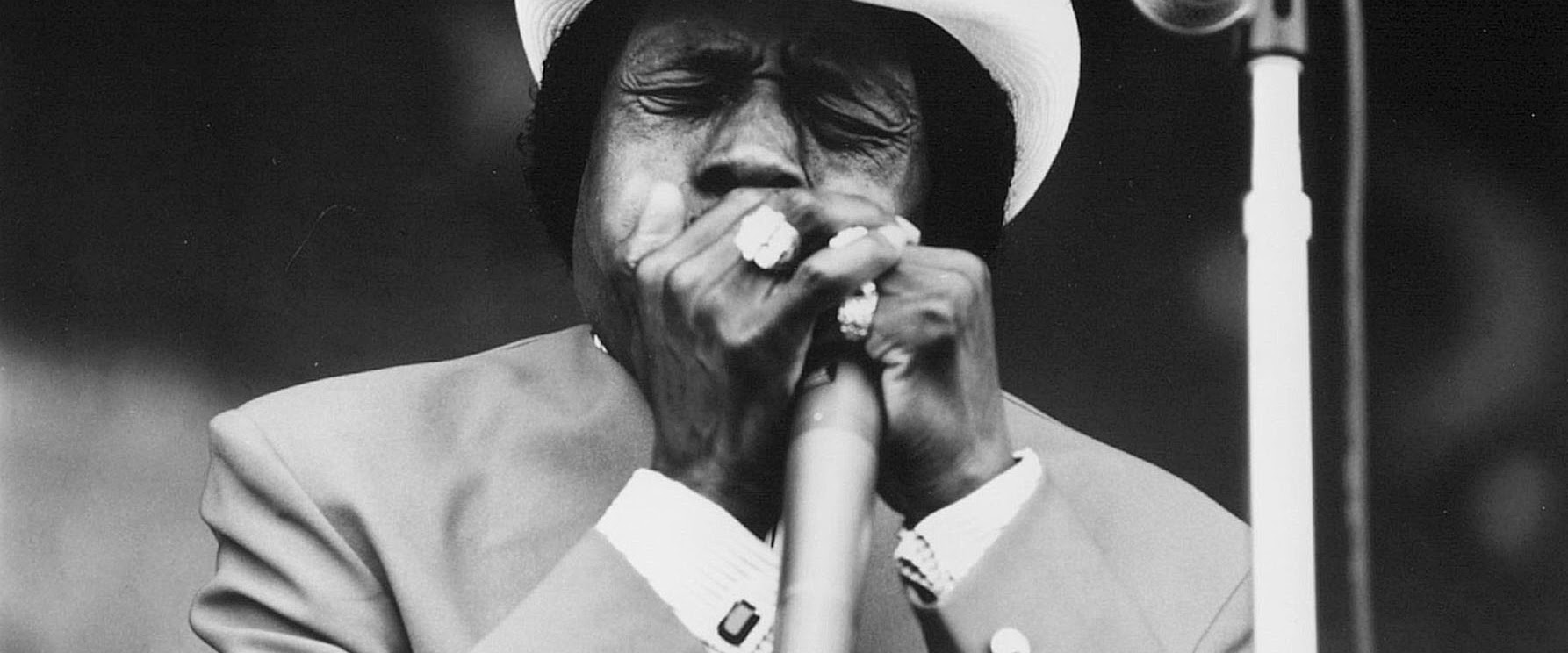Junior Wells – A Complete Biography
Introduction
Junior Wells was one of the most dynamic harmonica players and vocal stylists of the postwar Chicago blues. A street-honed performer with a sharp sense of showmanship, he helped carry South and West Side club blues into the album era and onto international stages, often alongside his longtime partner, guitarist Buddy Guy. His signature single “Messin’ with the Kid” and his landmark LP Hoodoo Man Blues became touchstones for generations of blues and rock musicians.

Childhood
Born Amos Wells Blakemore Jr. on December 9, 1934, in the Mississippi River region around Memphis/West Memphis, he grew up surrounded by gospel, jukebox R&B, and down-home blues. Family moves between Tennessee and Arkansas exposed him early to the sounds that would define his life. By grade school he was fixated on the harmonica—so much so that an oft-told childhood episode has him “borrowing” a pawn-shop harp, playing it for a judge, and walking out with the case dismissed. Mentors included cousin Junior Parker and Sonny Boy Williamson II, whose amplified harp style shaped the young musician’s attack.
Youth
In 1948 Wells followed the Great Migration north with his mother to Chicago. As a teenager he hustled gigs at house parties and taverns, then vaulted into the big leagues when he briefly replaced Little Walter in Muddy Waters’s band, stepping onto Chess Records sessions and earning a reputation as a fearless, hard-blowing upstart. By the early 1950s he was cutting his own sides and fronting bands on the South Side, fusing traditional blues feeling with a tougher, urban drive.
Adulthood
From the late 1950s through the 1970s, Wells emerged as a magnetic club headliner and a studio presence whose recordings bridged bar-band grit and album-length vision. He became inseparable from Buddy Guy on Chicago’s West Side circuit, refining a punchy, soul-charged blues vocabulary that influenced peers and younger rock audiences alike. The partnership reached a high point with Hoodoo Man Blues (Delmark, 1965)—a loose, in-the-room masterpiece that became Delmark’s bestseller and a canonical Chicago blues LP. Because of contract worries, Guy was originally credited as “Friendly Chap,” adding to the album’s lore. International touring followed, and Wells’s swaggering stagecraft—quick feet, sharp clothes, and call-and-response harp blasts—made him a favorite on festival stages from Montreux to the U.S. college circuit. Later collaborations and live sets (Southside Blues Jam, Buddy Guy & Junior Wells Play the Blues, Drinkin’ TNT ’n’ Smokin’ Dynamite) kept his name central as the blues revival broadened.
Major Compositions
Although best known as a performer and interpreter, Wells’s recorded legacy centers on several defining sides he helped popularize:
- “Messin’ with the Kid” (1960): a brass-tacks anthem whose stop-time groove and streetwise humor made it his calling card; later recognized by the Blues Foundation as a Hall of Fame classic.
- “Little by Little” (1960): an early charting R&B-leaning single that showcased his knack for concise hooks and sly delivery.
- “Come On in This House” and “Snatch It Back and Hold It”: staples of his live book, carried forward on stage and on influential LPs through the 1960s and ’70s.
- Hoodoo Man Blues (1965 album): not a single song but a full-band statement—loose, funky, and modern—that set a template for electric Chicago blues on LP.
Death
After decades on the road, Wells’s health declined in 1997 when he was diagnosed with lymphoma and suffered a heart attack; he slipped into a coma and did not fully recover. He died in Chicago on January 15, 1998, at age 63. Obituaries emphasized both his musical authority and charismatic presence, noting the breadth of his influence on blues and rock audiences.
Conclusion
Junior Wells distilled the intensity of South Side nights into compact riffs, shouts, and harp lines that felt both traditional and new. He could play tough or tender, flip from a sly spoken aside to a cutting bend, and rally a crowd with a single yelp through an amplified bullet mic. If Hoodoo Man Blues gave the album era one of its purest Chicago statements, “Messin’ with the Kid” gave the bar band a forever standard. Together they frame a career that bridged neighborhood joints and international festivals—and secured Wells’s place among the architects of modern electric blues.

Comments are closed